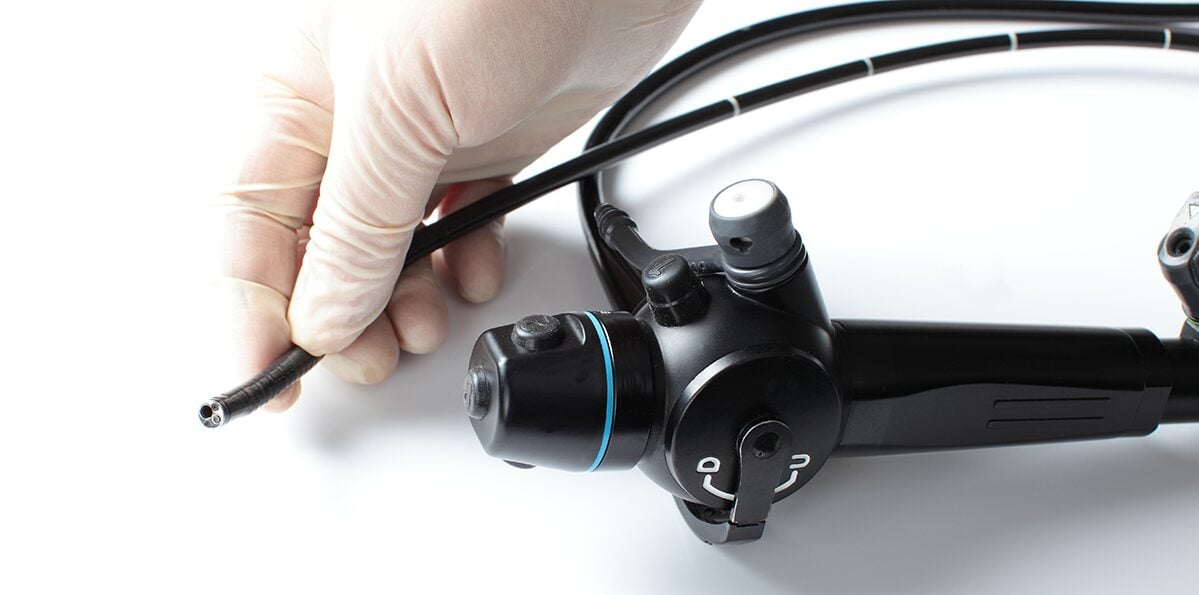As coronavirus continues to spread throughout the United States and around the world, hospitals are doing their best to meet the additional demands placed on their personnel and systems. Between conserving face masks and other PPE, and closely monitoring incoming patients for symptoms of COVID-19, hospitals are increasing vigilance at every level in attempts to keep beds open and staff equipped to treat victims of this novel virus.
In the meantime, the particular risk exists for endoscopy units, and the SPDs that serve them—and proper reprocessing of complex endoscopes could prevent further spread of COVID-19. Here’s what you should know.
COVID-19 Risk for Endoscopy Units
While coronavirus symptoms of fever, dry cough, and fatigue are well-known, GI symptoms have for the most part remained under the radar for the public in the U.S. Diarrhea, however, is one of the virus’s most common symptoms, with over half of infected or suspected patients presenting the symptom, according to a paper out of the Department of Gastroenterology at Zhongnan Hospital of Wuhan University in China.
Another paper from experts in China relayed that, over a two-week period, roughly half of coronavirus-infected and hospitalized patients tested positive for the virus in their stool, supporting the idea that the virus could be transmitted through fecal matter. Significantly, nearly a quarter (23.29 percent) of patients in the study whose respiratory samples had tested negative for the virus still tested positive in their stool.
Medical staff performing endoscopic procedures—and the SPD personnel who reprocess the scopes—should be aware of this possibility of conflicting test results.
At this point, many hospitals have postponed elective endoscopic procedures, but for the emergency procedures that must take place, endoscopic personnel must take extra precautions (via PPE and other methods) to reduce the risk of infection in case a patient infected with coronavirus lands in the endoscopic unit.
At the same time, SPDs play an important role in reducing the risk of environmental contamination by properly reprocessing endoscopes.
Reprocessing GI Endoscopes in the Time of COVID-19
Though incredibly contagious, coronavirus is easily neutralized by common disinfectants, so existing reprocessing protocols should successfully eliminate any presence of the virus. In other words, there’s no need to change your processes.
However, it’s crucial that all reprocessing steps be followed vigilantly. As we know, scopes are complex devices and there are a lot of steps involved in reprocessing them. If one step is overlooked or done incorrectly—which often occurs as confirmed by the CLEANR study, which reported 99 percent of endoscope cases using manual reprocessing versus 25 percent of those using an automated reprocessing system missed at least one step—the risk of scope and environmental contamination remains.
Take the time as a department to review your endoscope reprocessing protocols and quality assurance program. ANSI/AAMI ST91:2015, Section 4.3 recommends that all personnel responsible for the reprocessing of endoscopes be trained upon initial hire, annually, at designated intervals, and whenever new endoscope models are added to the inventory. Verify and document that your staff has the competencies needed for each type of endoscope. Perform audits and retrain personnel as needed.
How ScopeTrac Can Help
You can support your department’s efforts and promote patient safety by implementing ScopeTrac. ScopeTrac and ScopeTrac Advance manage the entire endoscope reprocessing loop—from the arrival of contaminated endoscopes in the SPD; to their decontamination, high-level disinfection, and storage; to the next patient use.
ScopeTrac helps departments track their entire endoscope inventory, using model and serial numbers as recommended by AAMI ST 91. It outlines the defined processing steps that must occur per the manufacturer’s instructions for use (IFU) and allows personnel to check off each step performed in the correct order. With foot pedal controls, ScopeTrac Advance enables hands-free documentation of required processing steps. It can also interface with some automated endoscope reprocessors (AERs).
ScopeTrac’s data and analytics let you monitor and document every step of reprocessing, so you can make sure that endoscopes are properly cleaned, disinfected, and stored—and secure better department outcomes regardless of whether we’re in the middle of a pandemic.
[1] Working lengths pulled from Olympus America flexible endoscope specifications, current as of April 21, 2019
[2] See parameters for 100% ETO sterilization for the Olympus TJF-Q180V duodenoscope at https://medical.olympusamerica.com/sites/default/files/pdf/TJF-Q180V_ReprocessingManual.pdf
[3] See the relevant study at https://www.hopkinsmedicine.org/news/newsroom/news-releases/infection-rates-after-colonoscopy-endoscopy-at-us-specialty-centers-are-far-higher-than-previously-thought
[4] See the Steris VPRO Max IFU at https://www.steris.com/onbDocs/V432/1/824381.pdf
[5] Sylvie Dufresne, PhD, and Thomas Richards, PhD, “The First Dual-Sterilant Low-Temperature Sterilization System”, Canadian Journal of Infection Control 31, no. 3 (Fall 2016): 173


